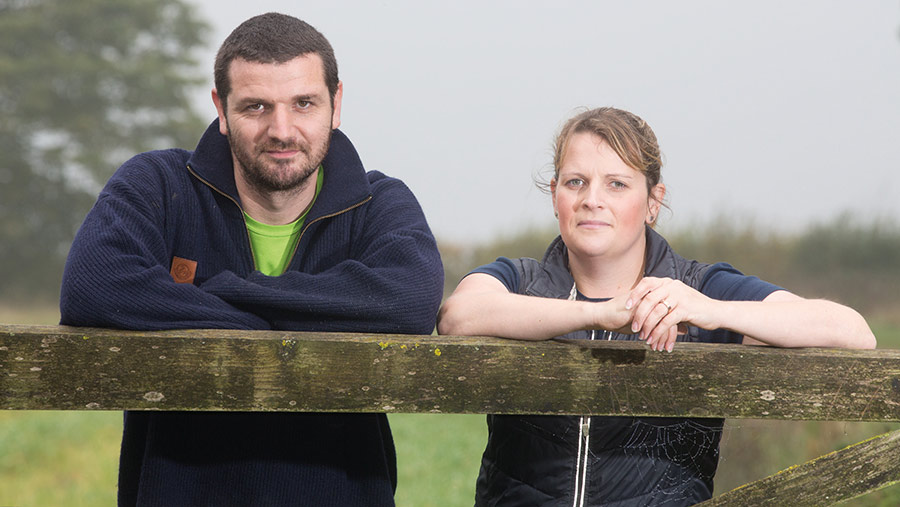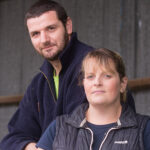Farmer Focus: Drought derails sheep dairy plans
 Rob and Jo Hodgkins© Tim Scrivener
Rob and Jo Hodgkins© Tim Scrivener As Rob wrote last month, July 2022 has been the toughest month of our journey so far – hopefully ever.
We started milking and just 12 weeks after our planning came through, we had saleable milk – hurrah. It was hard fought.
The milkers – 100 ewes and 200 two-tooths – had lambed from mid-April to mid-May.
Training them was tough. The first day, shepherd Robbyn and I did them all. It took us 12 hours of being kicked repeatedly on the wrist bones, pooed on, peed on and laid on.
We milked for about three weeks. Then, with the drought biting hard, we had to dry them off.
See also: How a resilient sheep dairy farm overcame multiple setbacks
It’s mixed emotions and mass exhaustion for Robbyn, Rob and myself. Getting up at 5am to milk, and then going combining once the first day’s work was finished, was utterly exhausting.
We would never have done it if Monty and Jamie on the arable team hadn’t had most of harvest under control.
So, we’ve got the feeding system to get in and the second side of the parlour this winter, some concreting to do and the water tanks to dig in.
Then, hopefully, we’ll get the perimeter of the site permanently fenced this winter before we kick off again in the spring.
We had rain recently – we got 20mm. In the past 12 months, we have not quite had 400mm.
We usually get 650mm, so the breeding ewes and commercial flock have had it hard. We’ve been here before, in 2018, when we let the ewes take more of the hit.
This time, by default, it’s been the lambs. As Rob and I have been distracted by the dairy, we haven’t rotationally grazed early enough or set up enough paddocks to maximise the system.
Fields to wean lambs on to didn’t get shut up, so the drought has had more of an effect.
However, we’ve got nearly 404ha (1,000 acres) of cover crops drilled and have moved the lambs to a neighbour’s Countryside Stewardship ground to buy time for the cover crops to come good.
We also had far too many sheep relying on bowsers through the hottest part of the drought.
Luckily, the arable team came to the rescue and since we’ve stopped milking, Rob and I have invested in some serious lengths of blue pipe to let the mains take the strain.

